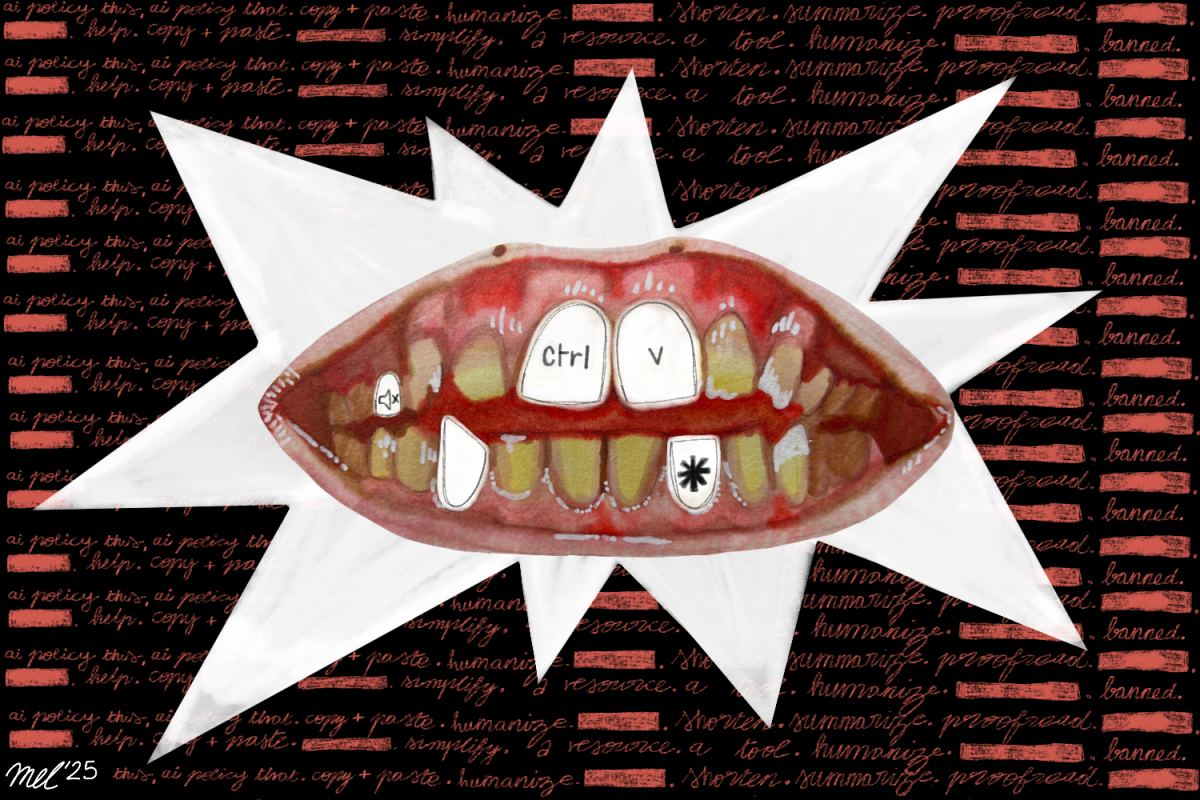This past Tuesday, Kim Kardashian’s Skims clothing brand made waves with its highly anticipated Dolce & Gabbana collab. Kim first teased the launch by sharing a vintage-inspired campaign on her personal Instagram page, which has over 359 million followers. The drop caused such a frenzy, the Skims website briefly crashed.
The campaign showed Kim and Kourtney Kardashian luxuriating in classic Dolce & Gabbana leopard print and lingerie, officially ending their feud over who owns the “Dolce Vita” lifestyle.
Dolce & Gabbana was founded by Italian designer duo Domenico Dolce and Stefano Gabbana and debuted at Milan Fashion Week in 1985. In just a few decades, the pair has successfully leveraged “dolce vita” — “sweet life” in Italian — to create a billion-dollar global brand. Dolce & Gabbana is known for its elevated animal prints, sexy black lace, vibrant floral prints and, perhaps most notably, its problematic past.
Fans of the Kardashian clan are well aware of the Dolce drama that took place during season three of the Hulu reality show “The Kardashians.” To make the drawn-out drama short, Kourtney accused Kim of using her wedding to Travis Barker, the drummer of Blink-182, as the platform for a new business opportunity. Kim collaborated with Dolce & Gabbana for a runway show, pulling from the brand’s ‘90s archive. Many looks from Kourtney’s wedding were pulled from that same archive.

While fans are glad Kim and Kourtney can forgive and forget with one another, I was left wondering if anyone would criticize a business-minded billionaire for continuing her partnership with such a controversial label.
The youngest KarJenner sister, Kylie Jenner, commented, “obsessed !!!”
“The feud is OVER!!!!” wrote @coltpaulsen. This comment received over 8,300 likes.
Many fans commended Kim for her impressive marketing skills, expressed excitement to shop the new items or praised the sisters for putting the past behind them. After minutes of scrolling, I could not find one comment mentioning Dolce & Gabbana’s history.
Dolce & Gabbana released an ad glamorizing gang rape for Spring and Summer 2007. The ads were then pulled from all Spanish and Italian publications.
In 2012, the brand sent white models down the catwalk wearing earrings reminiscent of “Blackamoor” statues, racist characters of Black people. No Black models were featured in that show. In 2013, the designer duo attended a Halloween party themed “Disco Africa” and snapped a photo with Alessandro Dell’Acqua, who was in full blackface.
In 2015, in an interview for a story with Italian weekly magazine Panorama, Dolce spoke out against gay couples having children. Dolce, in response to questions about his stance, remarked, “I’m not convinced with what I call children of chemicals … a rented uterus, semen selected from a catalog.”
In 2017, Dolce & Gabbana released a shoe called the “Slave Sandal,” which retailed for over $2,300. The brand also released sneakers printed with the phrase “I’m Thin & Gorgeous.”
During “The Great Show” in Shanghai, Dolce & Gabbana released a video featuring a Chinese woman attempting to eat Italian food with chopsticks. The video sparked major controversy for its racist, distasteful sexual innuendos. Many models and Chinese brand ambassadors disaffiliated from the event, leading to its cancellation.
Following the outrage, Instagram direct messages between Gabbana and an Instagram user named Michaela Tranova were leaked, in which Gabbana allegedly messaged her, “China Ignorant Dirty Smelling Mafia,” among other remarks.
Gabbana is also notorious for leaving nasty comments about celebrities on Instagram. He commented “She’s so ugly!!!” under a collage of Selena Gomez’s runway looks, and one that called the Kardashians “The most cheap people in the world.”
Dolce & Gabbana is not the only brand with a problematic past, which brings me to my point: Why do we continue to support brands that say and do harmful things? Do aesthetics outweigh accountability, or are we simply suffering from collective short-term memory loss?
“Separate the art from the artist” is a phrase we’ve all heard. It’s a concept used to let admirers enjoy an artist’s work without endorsing their behavior or beliefs. However, this is not the original context of the phrase.
Separating the art from the artist was originally a 20th-century academic idea used to analyze poetry. The whole idea was to remove bias during the critiquing process and see if the work could stand on its own without a name or context attached.
Now, the expression stands for something entirely different. On the surface, it makes sense. It’s no easy feat to abandon a label you love, but when these harmful offenses are as recurring as Dolce & Gabbana, can we truly separate the two? If artists are their art, as many argue, does supporting the product inherently support the person — or, in this case, the brand and its values?
As for celebrities who are notorious for putting money ahead of conscience, continued support of such brands raises questions about their own morals. Take Kim Karshadian, a mother to four Black-identifying children who is signing deals with a label that has a history of racist behavior.
Fashion doesn’t just exist on a runway or a rack. It carries messages, cultural weight and history. When we buy into a brand, we’re also buying into its story. So, it’s time to rethink the narratives we’re supporting and ask ourselves if aesthetics should ever come at the cost of integrity.

























































































































